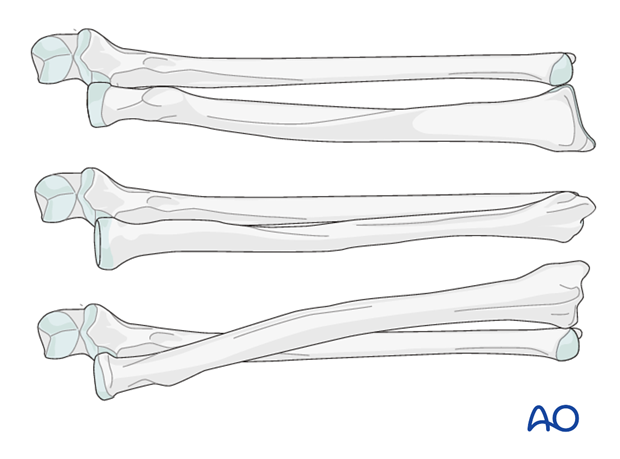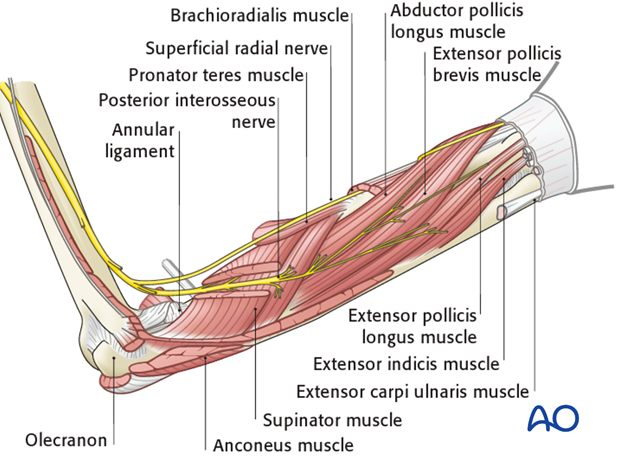Principles underlying forearm shaft fracture treatment
1. Treatment
The radial bow and the relations between the proximal and distal radio-ulnar joints comprise a complex 3-dimensional functional unit. Even small deformities caused by fracture malunion can result in significant functional impairment.
See:
- Schemitsch EH, Richards RR (1992) The effect of malunion on functional outcome after plate fixation of fractures of both bones of the forearm in adults. J Bone Joint Surg Am; 74(7):1068-78.
As anatomical restoration is so important to function, any forearm shaft fracture is considered equivalent to an articular fracture. For this reason, forearm fracture treatment in adults is generally surgical.

2. Timing of surgery
Isolated forearm shaft fractures should be treated, as with most diaphyseal fractures, as soon as possible. Consideration has to be given to factors such as soft tissues. While open fractures are usually best treated immediately, surgical treatment of closed fractures with severe soft-tissue compromise should be delayed if necessary.
In polytrauma patients, forearm fracture treatment is not part of the immediate operative long bone fracture stabilization. Fracture reduction and fixation should be delayed until after the patient’s general condition has stabilized.
Prolonged delay in fixation might result in a more difficult and technically more demanding procedure, due to soft-tissue contracture and early callus formation.
3. Radial nerve
The course of the radial nerve in the forearm is of special consideration due its vulnerability during certain surgical approaches.
The common radial nerve enters the proximal part of the forearm lateral to the distal biceps and then bifurcates on the anterior aspect, forming a superficial and a deep branch. The deep branch enters the supinator muscle via the arcade of Frohse and crosses from the anterior to the posterior aspect of the forearm, as it curves around the neck of the radius within the substance of the supinator. The deep radial nerve (posterior interosseous nerve) is to be protected in the proximal part of the forearm in both the anterior and posterolateral approaches.
In the distal part of the forearm, the subcutaneous superficial radial nerve must be protected.

4. Age of patient
Forearm shaft fractures in pediatric patients are often treated with elastic nails, whereas adult patients are normally treated with plates. Adolescent patients (close to closure of growth plate) remain subject to individual solutions; some adolescents are similar to pediatric patients, whereas others are closer to adults. Individual solutions should be tailored according to patients age, size, and growth potential. While younger, smaller adolescent patients with open physes can be treated with elastic nails, mature, bigger adolescent patients should be treated by internal fixation using plates.
For treatment of pediatric injuries, see the pediatric trauma section of AO Surgery Reference.













